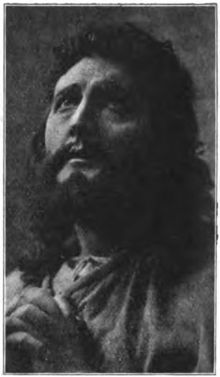- Clarence Whitehill
-
Clarence Whitehill (November 5, 1871, Marengo, Iowa - December 18, 1932, New York, New York) was a leading American bass-baritone. He sang on both sides of the Atlantic and is best remembered for his association with the music dramas of Richard Wagner.
Career & vocal attainments
Whitehill first studied in Chicago with L. A. Phelps, and then in Paris with Giraudet and the celebrated pedagogue Giovanni Sbriglia. In 1898, he made his stage debut at La Monnaie in Brussels, as Capulet in Roméo et Juliette. He sang Nilakhanta at the Opéra-Comique the next year, becoming the first ever American singer to perform in that famous theatre.
Wishing to broaden his repertoire, Whitehill travelled to Frankfurt in Germany to further his studies with Julius Stockhausen. He subsequently appeared on stage in several German cities, while studying the big Wagnerian baritone and bass-baritone roles. In 1904, he made a highly successful debut at the Bayreuth Festival as Wolfram in Tannhäuser. Later, he sang Amfortas and Wotan, garnering equal praise from critics and audiences.
Whitehill went on to appear with considerable success at the Royal Opera House, Covent Garden, London, in the first Ring Cycle given there in the English language. He decided, however, that the time had come for him to leave Europe and return to America, and he made his Metropolitan Opera debut on November 25, 1909. He would enjoy a long and praiseworthy career at the Met despite a throat ailment which periodically affected one of his vocal cords. He was especially acclaimed in such taxing Wagnerian parts as Hans Sachs in Die Meistersinger von Nürnberg, but he also appeared in the American premiere of the French operas Louise (in 1921) and Pelléas et Mélisande (in 1925), and in the North American premiere of Erich Wolfgang Korngold's one-act opera Violanta (on 5 November 1927). He was to remain on the Met's roster of singers until 1932, the year of his death.
Whitehill was notable for the tonal beauty of his large voice, the nobility of his singing style and the dignity of his stage demeanour. His diction, phrasing and enunciation were considered to be exemplary, too, while his interpretations were said to have a poignant intensity which set them apart from those of his contemporaries. Fortunately, Whitehill made a number of gramophone records prior to World War I which display something of his greatness as a Wagnerian singer. Many of these recordings are available on CD reissues. For a discussion of their qualities, see Michael Scott's The Record of Singing, Volume One (Duckworth, London, 1977).
Sources
- The Metropolitan Opera Encyclopedia, edited by David Hamilton, (Simon & Schuster, New York, 1987), ISBN 0-671-61732-X
Categories:- 1871 births
- 1932 deaths
- People from Iowa County, Iowa
- American opera singers
- Operatic bass-baritones
Wikimedia Foundation. 2010.

